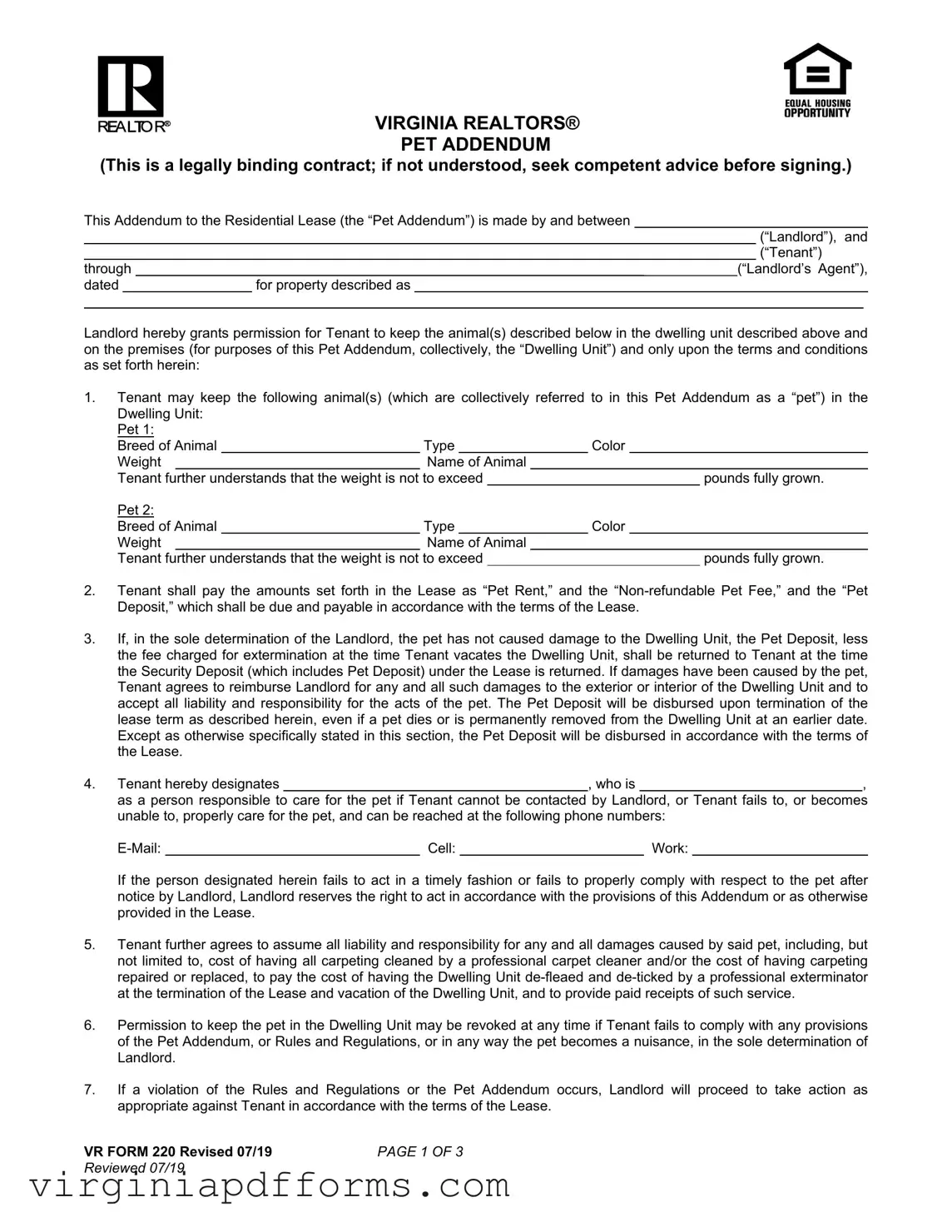Fill in a Valid Virginia Realtors Pet Addendum Template
The Virginia Realtors Pet Addendum is a document that outlines the terms and conditions under which tenants can keep pets in a rental property. This addendum is a crucial part of the lease agreement, ensuring that both landlords and tenants understand their responsibilities regarding pet ownership. It includes details about the types of pets allowed, any fees associated with keeping a pet, and the obligations of the tenant to maintain the property and care for their pet.
Access My Document Now
